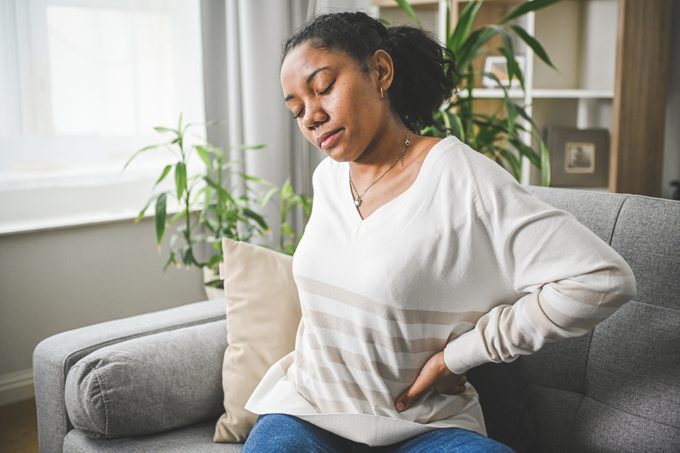
Understanding Sun Poisoning: What You Need to Know
Sun poisoning is an extreme version of a sunburn, according to Farah Moustafa, MD, FAAD, a dermatologist and Director of Laser and Cosmetics at Tufts Medical Center. She explains that it starts with red, painful skin—like a regular sunburn—but can quickly escalate into more severe symptoms that require medical attention. While one in three Americans report getting a sunburn each year, about 33,000 individuals end up needing medical treatment for severe sun poisoning symptoms. Below, experts break down what sun poisoning is, how to identify it, and when to seek help.
What Is Sun Poisoning?
Hannah Kopelman, MD, a dermatologist at Kopelman Aesthetic Surgery and co-founder of DermOnDemand, describes sun poisoning as an extreme sunburn with systemic symptoms beyond just red, painful skin. Although not technically a form of poisoning, it’s a term used to describe a severe reaction to UV radiation. A bad sunburn causes redness, tenderness, and possibly blistering, but sun poisoning takes it further. Symptoms may mimic an allergic reaction or make you feel like you’ve come down with the flu.
Certain people are at higher risk, including those with fair skin, a family history of skin cancer, those living near the equator, individuals taking certain medications (such as antibiotics or retinoids), and those with chronic conditions like autoimmune diseases. The Cleveland Clinic notes that the exact cause of sun poisoning isn’t fully understood, and its effects can vary from person to person.
Symptoms of Sun Poisoning
Sun poisoning can feel like a severe cold or flu with full-body symptoms. While a red, painful sunburn might be immediate, symptoms of sun poisoning can take hours or even days to appear. Common signs include:
- Nausea
- Light-headedness
- Fever
- Chills
- Vomiting
- Dehydration
- Headache
In addition to these, there may be severe redness, pain, tenderness, and possible blistering of the skin itself.
How to Tell If You Have Sun Poisoning
A sunburn is a radiation burn caused by UV rays. When exposed to too much UV radiation, skin cells die off, leading to redness, swelling, and other typical sunburn symptoms. However, sun poisoning triggers a broader inflammatory response throughout the body. The immune system reacts to the intense UV damage, releasing chemicals similar to those released during an infection.
Here are some key indicators that you may have sun poisoning:
-
Feeling Like You Have the Flu
Flu-like symptoms such as fever, chills, fatigue, nausea, vomiting, and body aches can occur after a long day in the sun. These symptoms are due to the release of chemicals from damaged skin that activate the immune system. -
Your Skin Prickles
Severe sun poisoning can cause a prickly sensation on the skin. If touching your skin feels unbearable, it could indicate a very severe sunburn. Soothing treatments like aloe vera, cool showers, and ibuprofen can help. -
Extreme Thirst
Sun poisoning can lead to dehydration. Symptoms include dark-colored urine, not urinating, dry mouth, and feeling faint. In severe cases, IV hydration may be necessary to prevent organ damage. -
Dizziness or Headaches
Fluid loss from sun poisoning can cause dizziness, headaches, and confusion. This happens because blood pressure drops, reducing oxygen flow to the brain. Electrolyte imbalances can also contribute to these symptoms. -
Fever
A fever is often part of the body's immune response to sun poisoning. A temperature of 102 to 103°F may require immediate attention, especially if accompanied by chills or illness. -
Blisters on the Skin
Blistering is a sign of severe sun poisoning. Avoid popping blisters, as this increases the risk of infection. Apply aloe vera and avoid further sun exposure until healing occurs. -
Falling Asleep in the Sun
People who fall asleep in the sun often experience severe burns. Even if no symptoms are present yet, increased fluid intake and aloe application are recommended. -
Peeling Skin
Peeling is a natural part of healing after a severe sunburn. Do not pick at peeling skin, as it protects new skin underneath. Moisturize with aloe vera and avoid hot showers. -
Rash on the Body
A sun poisoning rash appears as an inflamed, itchy eruption with small bumps or blisters. Cool compresses, aloe vera, and hydrocortisone cream can help manage symptoms. -
Swelling
Swelling occurs due to inflammation and fluid retention. Elevate affected areas, drink fluids, and apply cool compresses. Severe swelling around the eyes or throat requires immediate medical attention. -
Eye Pain
Prolonged sun exposure can cause photokeratitis, a sunburn on the cornea. Symptoms include pain, redness, and sensitivity to light. Artificial tears and rest can help, while severe cases require an eye doctor.
Heat Rash vs. Sun Poisoning
Heat rash is different from sun poisoning. It appears as tiny red bumps in skin folds and is caused by trapped sweat. Sun poisoning involves widespread inflammation and systemic symptoms.
Sunstroke vs. Sun Poisoning
Sunstroke, or heat stroke, is a medical emergency caused by the body overheating. Unlike sun poisoning, it doesn’t always result from sun exposure and affects skin color differently. It is associated with neurological symptoms like confusion and fainting.
Managing Sun Poisoning
There is no instant fix for sun poisoning, but symptoms can be managed with proper care. Hydration, cool compresses, aloe vera, and over-the-counter pain relievers can help. Avoid further sun exposure and rest as much as possible.
When to See a Doctor
If symptoms worsen, such as increasing pain, spreading redness, or a persistent fever, seek medical attention. Severe dehydration, dizziness, or altered mental status also require immediate care. Doctors will focus on correcting dehydration and electrolyte imbalance, which can be life-threatening if left untreated.
Preventing Sun Poisoning
To avoid sun poisoning, limit sun exposure between 10 a.m. and 4 p.m., use SPF 30 or higher sunscreen, and stay hydrated. Checking the UV index before going outside can also help minimize risk.